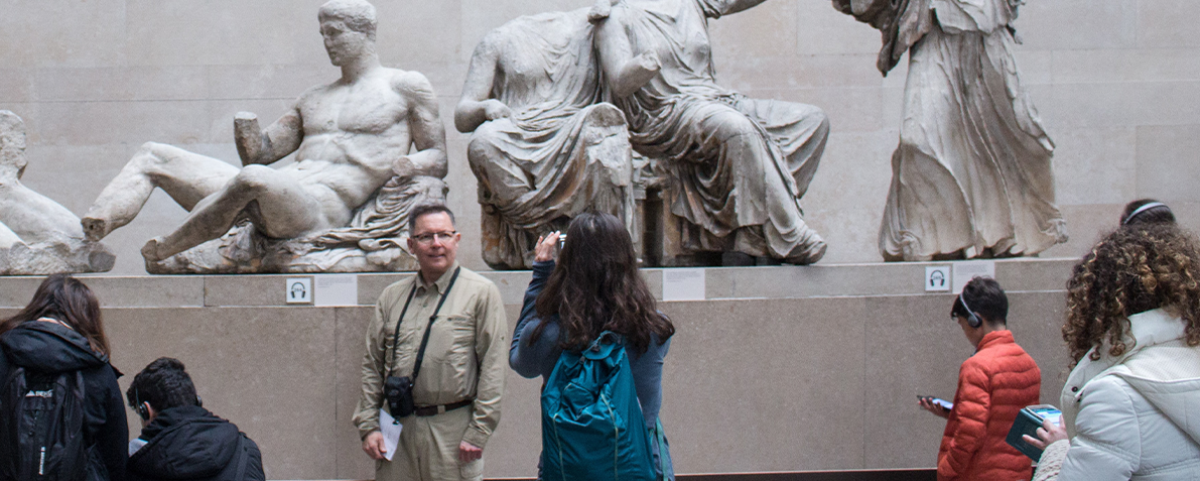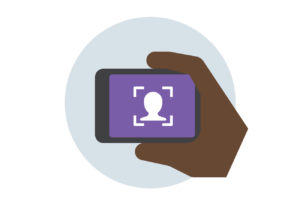
How-to Guide: Marketing & Distributing BYOD Mobile Guides
MARKETING & DISTRIBUTION IN 6 STEPS
In all of our mobile guide project engagements, we reserve at least two meetings to focus on just marketing & distribution, a critical aspect of any mobile guide program – the third leg of any mobile guide strategy along with the content and the technology. Whether you’re building DIY or enjoying white-glove service, the six steps below are a primer for thinking through your strategy. There are many ways to configure a marketing & distribution plan – evaluate the options below to determine which combination is right for you!
Re-opening and looking for a ‘contact-free’ self-guided visitor experience in light of COVID-19? Check out our webinar that goes in-depth into your overall BYOD mobile guide program as well as these marketing & distribution methods.
Want a detailed look at at the different publication methods? Check out our go-to guide for publishing applications.
 1. Public Wi-Fi
1. Public Wi-Fi
While data plans are more affordable than in years past, Wi-Fi connectivity is the most cost-effective way for visitors to engage with apps and content while in your museum (especially international visitors!). Make the process of joining the public Wi-Fi as easy as possible – this includes communicating the right network to join and the process of opting into terms of service and loading that initial webpage.
Pro tip: Encourage people to join public Wi-Fi at the registration desk and make the initial website page that loads the home screen of the web version of your mobile guide.
- Benefits:
- If you promote the web app version of your mobile guide, visitors do not have to download an app, which simplifies the process of accessing the application. Museums that make the initial website that loads the home screen of the mobile guide see 25-30% conversion rates. This all-in-one approach ensures visitors will connect to Wi-Fi and your mobile guide content.
- Trade Offs:
- Many museums make use of city Wi-Fi or extensions of their staff Wi-Fi. In some cases, your team may not have the necessary permission to update how the Wi-Fi login experience is set up.
- If the public Wi-Fi is not strong throughout the building or you are an outdoor site, this may require distributing the mobile guide in ‘offline’ mode. If this is the case, ensure the Wi-Fi is at least very strong in the reception area.
 2. Publishing to the App Store and Google Play
2. Publishing to the App Store and Google Play
- Benefits:
- Familiarity. By now, most visitors with a smartphone know how to find, download and even update apps on Google Play or the App Store on their personal device.
- The App Store/Google Play is called a ‘marketplace’ for a reason – your app is searchable by anyone providing ongoing advertising. Visitors can easily search for and find the applications as well. You can add security measures to limit the app for only on-site or paid visitors.
- Once your visitor has downloaded the app, it’s now a permanent feature on their phone until they remove it which makes it easy for them to revisit content.
- Fully integrated with the user’s messaging and social media apps making it even more seamless for them to share your tour with their connections across all platforms.
- These ‘native apps’ offer access to offline mode which means visitors only need cell service or Wi-Fi when they perform the initial app download. Once they leave Wi-Fi or cell service, the application will continue to work without connectivity required.
- Trade Offs:
- Downloading the app requires several steps – the visitor must get to the App Store/Google Play, search for the app, and then download before finally launching the application.
- While this is less of an issue now than compared to 5-10 years ago, some visitors don’t want another app on their phone.
 3. Texting Services
3. Texting Services
Visitors text a code of your choosing (e.g. musuemname) to a short number (e.g. 99-000) that auto replies with a customized message. Typically, you customize the message to include links to your mobile guide’s web app or direct links to the app’s page in the App Store/Google Play.
- Benefits:
- Pretty much everyone is familiar with texting – it’s an easy, familiar way that requires fewer steps to get access the app.
- These text service providers are often free if you stay under a certain volume and have volume-based pricing as you grow.
- Visitors have essentially opted-in to texting services with you (that they can easily unsubscribe to as all these services require these government regulated controls) which means you can continue the conversation during or after their visit including sending mass announcements, special discounts, or offers.
- Trade Offs:
- While there are many free versions of this service, it may be a noticeable expense at very high volumes.
Visitors scan a QR Code which can direct the visitor to either the web app version of your application or the App Store or Google Play download page. If you have QR codes next to specific collection artworks or objects, you can direct the visitor to a specific stop on the web app version of the mobile guide, too!
- Benefits:
- As most smartphones have a QR code reader built into the camera, using QR codes is much more convenient than it was in the past.
- QR codes function the same across devices which means that instructions are simpler to share on digital and print materials. QR codes are also a familiar symbol to many visitors.
- Even if you choose to advertise access via text service or the App Store/Google Play, QR codes are simple enough to be paired as a second option for those users that prefer QR codes. Pro Tip: Test several methods and then offer at least two options for visitors.
- QR codes are free but like the text service, you can choose a paid tier to track analytics. Tracking QR codes can help you better understand which marketing channels are delivering the highest engagement.
- Trade Offs:
- Some people just don’t like QR codes and will not engage with them. See the pro tip above!
- While there is near-universal recognition of QR codes, some visitors do not know how to engage with a QR code.
 5. Image Recognition
5. Image Recognition
This is where the phone’s camera is accessed in-app, automatically recognizes an object or artwork in the viewer, and then triggers content. This can be directing the visitor to a stop page on the mobile tour or it can trigger augmented reality content (content that overlays on the viewer).
- Benefits:
- It’s fun! Visitors can scan collection items to trigger content. Experiences like this are novel and can easily become part of your collection tour or scavenger hunts.
- Image recognition can simplify way-finding because visitors do not have to follow a specific route through the tour – they can decide to take their own journey and scan objects of interest.
- Works with both web applications and native applications.
- The first step towards augmented reality experiences if you’re looking to develop that kind of content over time.
- Trade Offs:
- For the best user experience, we recommend all objects on display be included in the image recognition experience or those items that are available for image recognition have clear labels indicating so. This makes it easier for people to differentiate between items they scan and items they can’t scan which cuts down on confusion.
- The app has to be able to recognize artworks and objects on display from different perspectives and in different lighting. Certain works (e.g. 3D sculptures) may require more testing and tweaking to ensure it is a smooth UX.
6. Advertising Best Practices
No matter which method you choose, successful conversion is about making sure that visitors know there is an app and understand how to access the app. Therefore we recommend:
- Printed Materials Onsite
- In general, advertising/promotional materials should be optimized for conversion (i.e. downloaded the app). We suggest a simple design with limited text or other distractions competing for viewer’s attention.
- Printed Materials typically include the following:
- 50% of surface area is a picture of a smartphone with the home screen or key screen of the app visible
- Various download instructions (direct and to the point)
- Headline explaining what the app is and who it is for (no more than 1-2 lines, better if it’s 2-3 word bullets)
- Posters Best Practices:
- Posters are often placed in elevators, on stations, columns etc. around the museum campus. They should be clean and simple so that visitors can quickly identify its purpose and message. There should only ever be one call to action (i.e. how to download).
Pro tip: users have a piggy bank of ‘clicks’ in them – take care how you spend that resource by minimizing clicks and ensuring each click delivers genuine value
- Digital Distribution
- Social Media (Twitter, Instagram, Facebook etc).
- Eblasts/Newsletters
- Confirmation messages or emails (e.g. after ticket purchase)
- Your organization’s website
- If you’re advertising access to your applications on digital channels, you’re one step ahead as the user is already in a digital environment. Much like the print materials, make it clear and simple how the user can access your application. Link directly to experiences rather than having a potential user click to your website where they will then have to click yet again to navigate to the download page.
- Click bank. Always keep in mind that visitors have a limited number of clicks in their bank or another way to say it, exploration energy. Users can fatigue quickly if they are having to click through many pages with not much payoff in the content or media. Make sure your users are spending their clicks in your application, not getting to your application.
- Registration Desk Talking Points
- This is the single most important moment on the visitor journey in your museum in terms of getting the app in visitors hands. Museums with high mobile guide engagement have this part down – the marketing & operations during this moment is what determines adoption rate, period.
- Ensure your visitor services staff alert visitors to the availability of a mobile guide. Staff should know how to access the app, what content and cool features are in the app, and how to troubleshoot if a visitor is unsure how to launch the experience.
- The communication about the mobile guide as part of the visitor on-boarding experience is key – the wording, when the information is communicated by registration staff, and any supporting materials that are provided (e.g. including the download instructions on the map). The blurb must be tested, refined, communicated to every visitor, and not an after thought or lumped in with too many other announcements.
Helpful Resources:
- Webinar Recording: Reopening Your Museum & Building Contact-less Visitor Experiences
- Go-to Guide: Marketing Digital Experiences During Coronavirus
- Webinar Recording: Marketing Digital Experiences During Coronavirus

